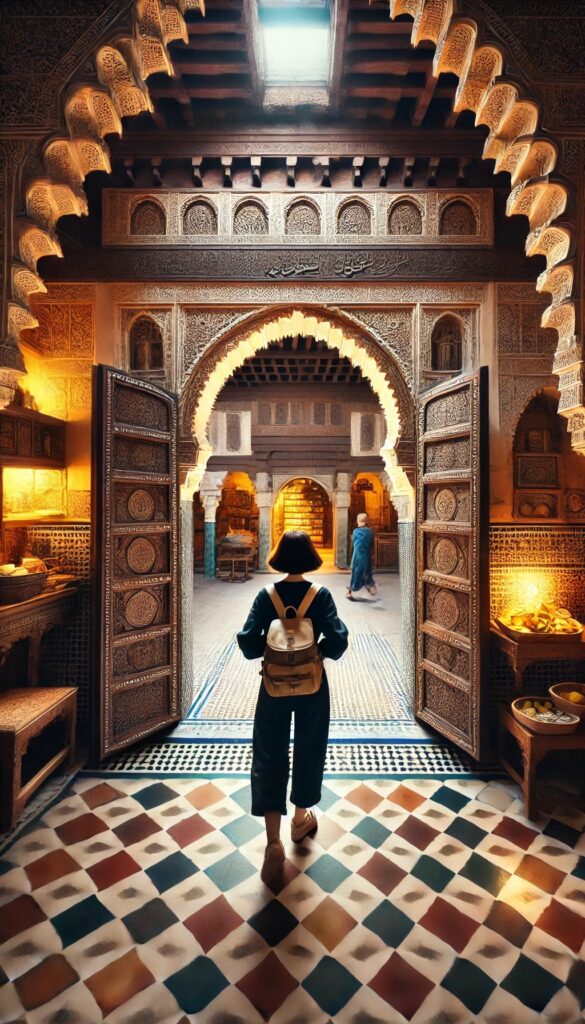ChatGPT:Fez, Morocco, is one of the country’s oldest and most culturally rich cities. It is renowned for its historic medina, Fes el-Bali, a UNESCO World Heritage site that is a labyrinth of narrow streets, bustling souks, and traditional Moroccan architecture. The city is also famous for its ancient university, Al Quaraouiyine, founded in 859 AD, which is considered the world’s oldest continuously operating educational institution. Fez is a center of Moroccan arts, crafts, and cuisine, with traditional tanneries, artisan workshops, and vibrant markets that showcase the city’s heritage. The city’s blend of medieval charm and vibrant modern life makes it a unique and fascinating destination.
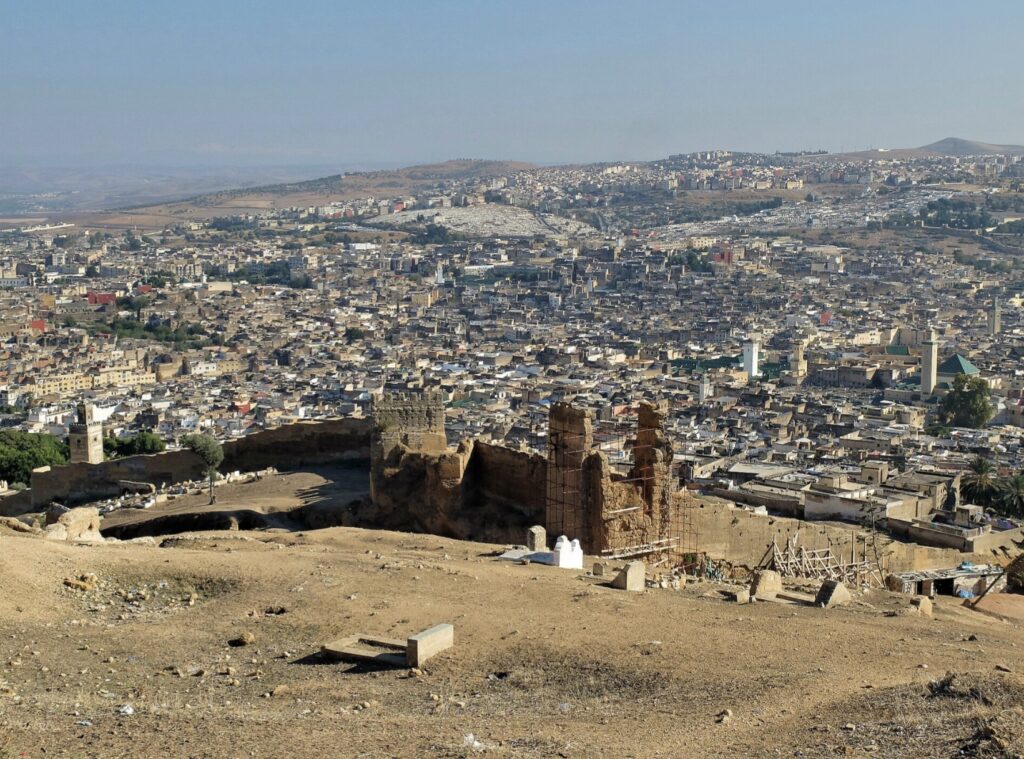
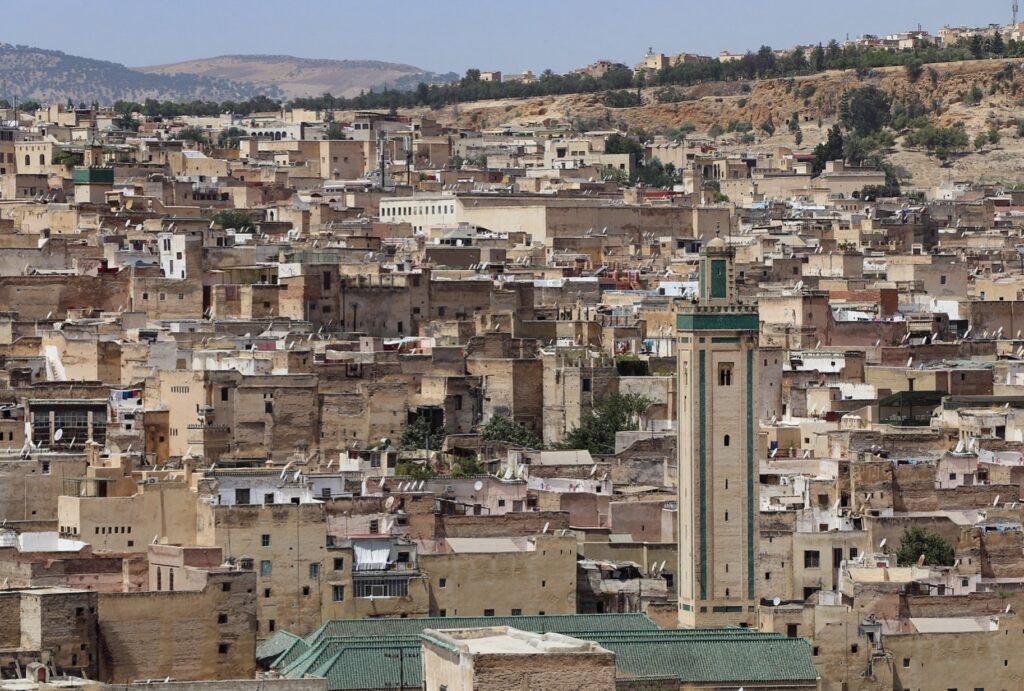
Origin and Early History
Fez was founded in 789 AD by Idris I, the first ruler of the Idrisid dynasty. His son, Idris II, significantly contributed to its development. Initially, the city was divided into two separate settlements on either side of the Fez River: Madinat Fas and Al-‘Aliya. Over time, these settlements merged to form the unified city of Fez.
Geography
Fez is located in northern Morocco, in the Fes-Meknes region. It sits in a valley surrounded by the Rif Mountains to the north and the Middle Atlas Mountains to the south. The city is bisected by the Fez River, which historically provided water and supported agriculture.
Historical Development
- Medieval Period:
- Idrisid Era: The city’s early growth was driven by its strategic location and the influx of immigrants, including Andalusian Muslims and Jews expelled from Spain, who brought skills and knowledge that enriched the city.
- Almoravid and Almohad Dynasties: During the 11th and 12th centuries, the city flourished under these dynasties, becoming a prominent cultural and religious center. The construction of the Al Quaraouiyine Mosque and University during this period cemented Fez’s status as a hub of learning.
- Marinid Dynasty: In the 13th century, the Marinids made Fez their capital, leading to significant architectural and cultural developments, including the construction of madrasas, mosques, and palaces. The city became a leading center of trade and craftsmanship.
- Modern Period:
- French Protectorate: In 1912, Morocco became a French protectorate, and Fez experienced significant changes, including the development of a new town (Ville Nouvelle) with modern infrastructure. Despite this, the medina retained its traditional character.
- Post-Independence: After gaining independence in 1956, Fez continued to grow and modernize while preserving its historic heritage. The city expanded beyond the medina, with new residential and commercial areas developing.
Cultural and Economic Development
- Education and Religion: Fez has long been a center of Islamic scholarship and education. The Al Quaraouiyine University attracted scholars from across the Islamic world. The city is also home to numerous madrasas, libraries, and religious institutions.
- Art and Crafts: Fez is famous for its traditional crafts, including pottery, leatherwork (notably the tanneries), metalwork, and textiles. The medina’s bustling souks are a testament to the city’s artisanal heritage.
- Tourism: In recent decades, tourism has become a significant part of Fez’s economy. The city’s rich history, architectural beauty, and vibrant culture attract visitors from around the world.
Fez’s unique blend of medieval and modern influences, its role as a center of learning and culture, and its rich artisanal traditions make it a remarkable city with a deeply layered history.
Historical Monuments and Tourist Attractions in Fez
- Fes el-Bali (Old Medina):
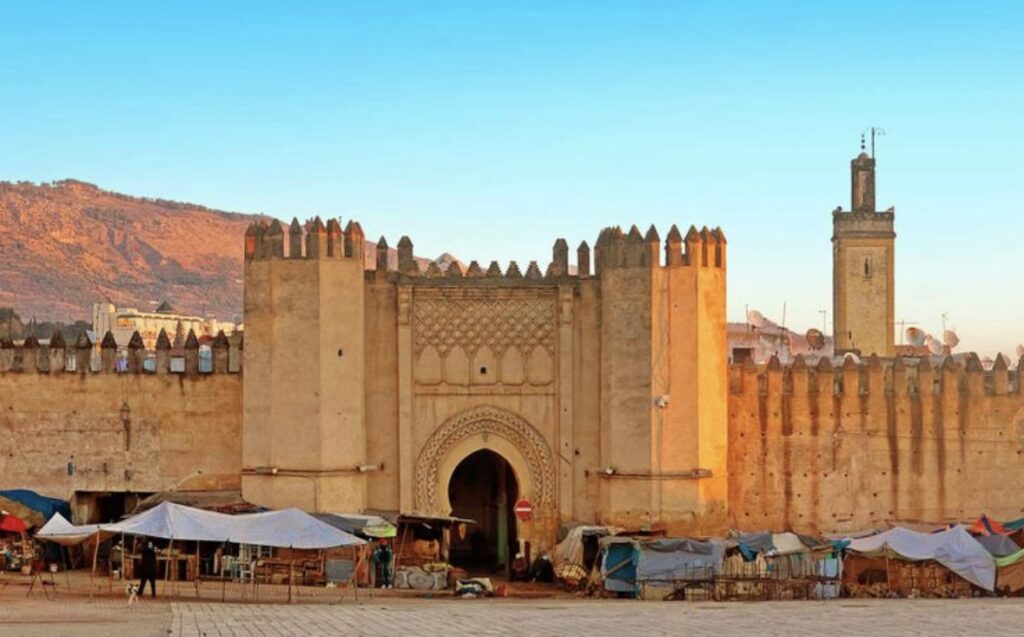
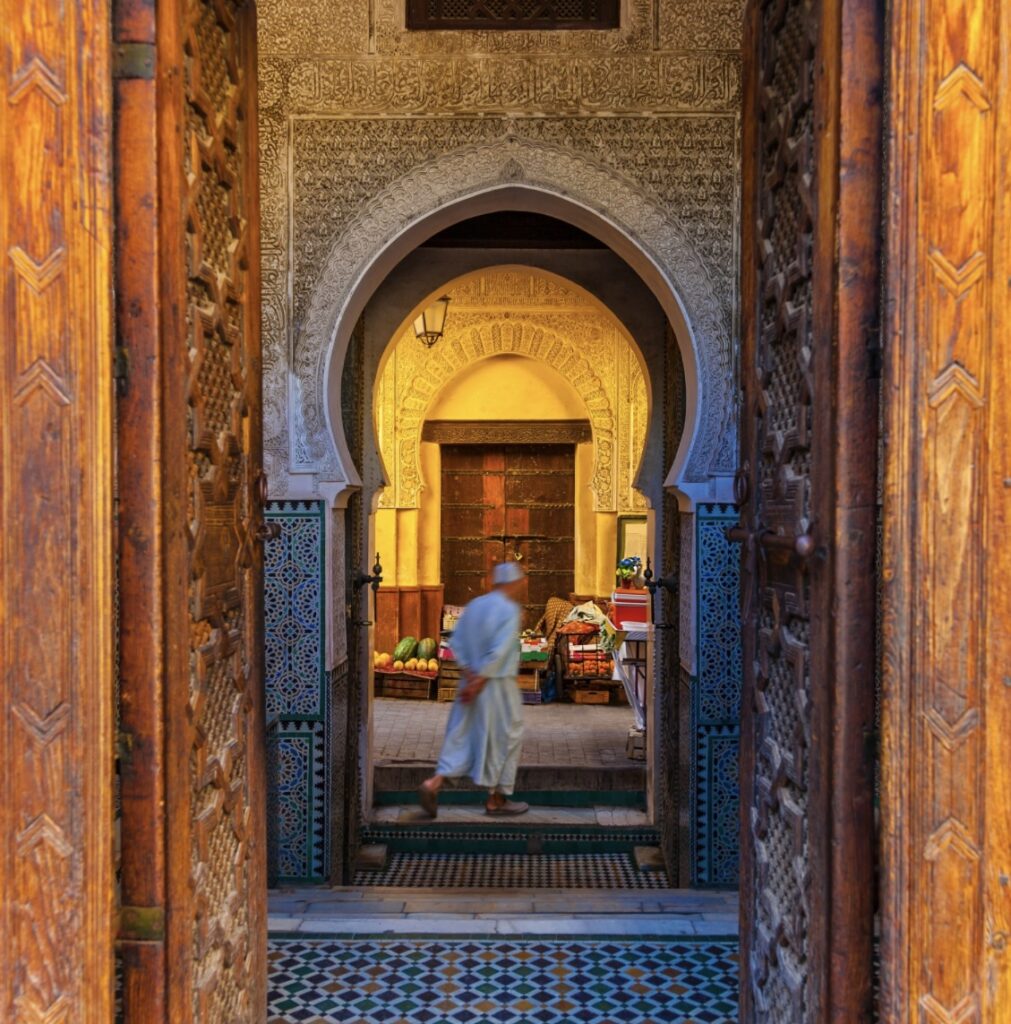
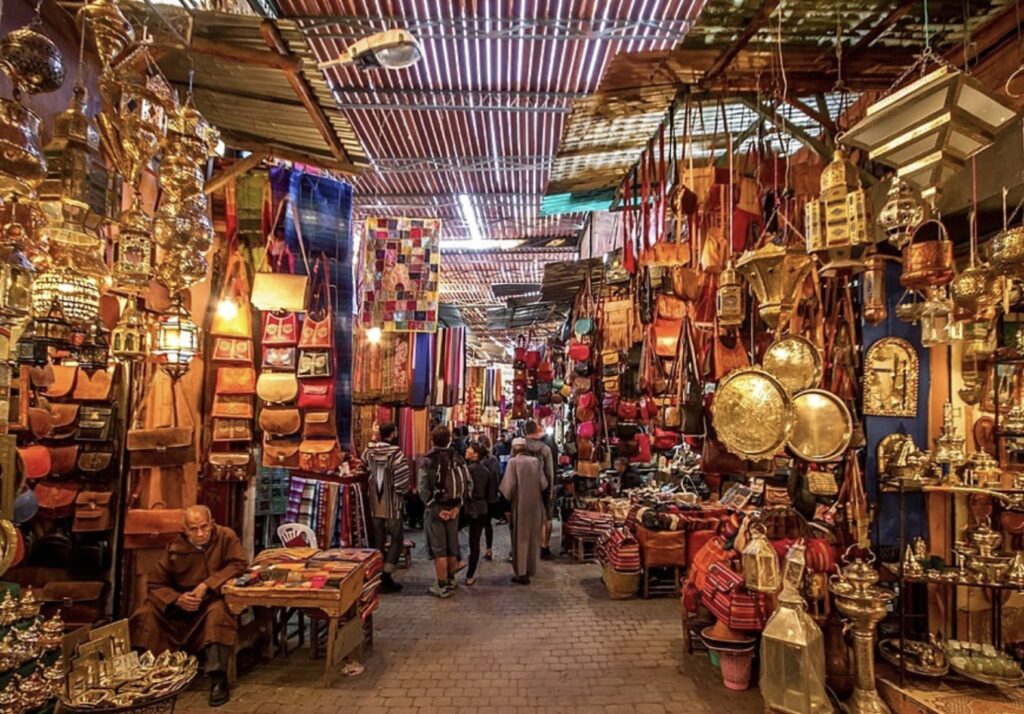
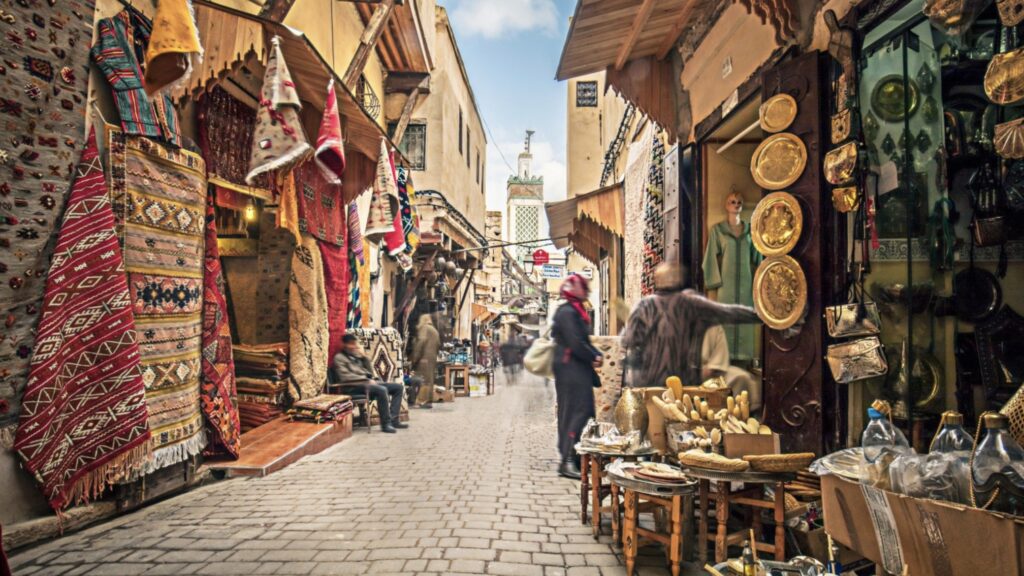
- Al Quaraouiyine Mosque and University: Founded in 859 AD, it is the oldest continuously operating university in the world.
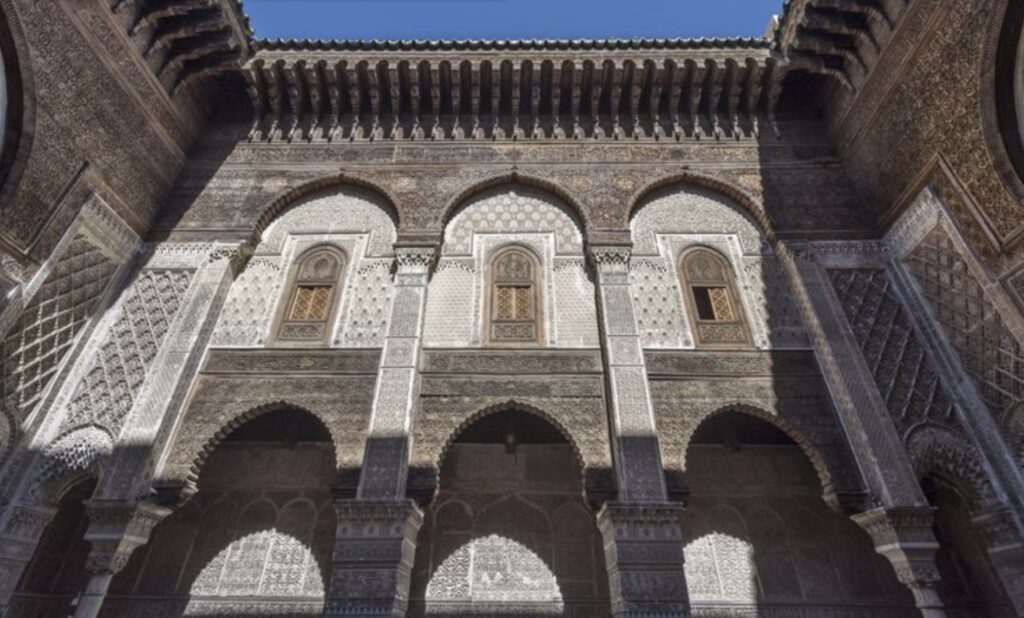
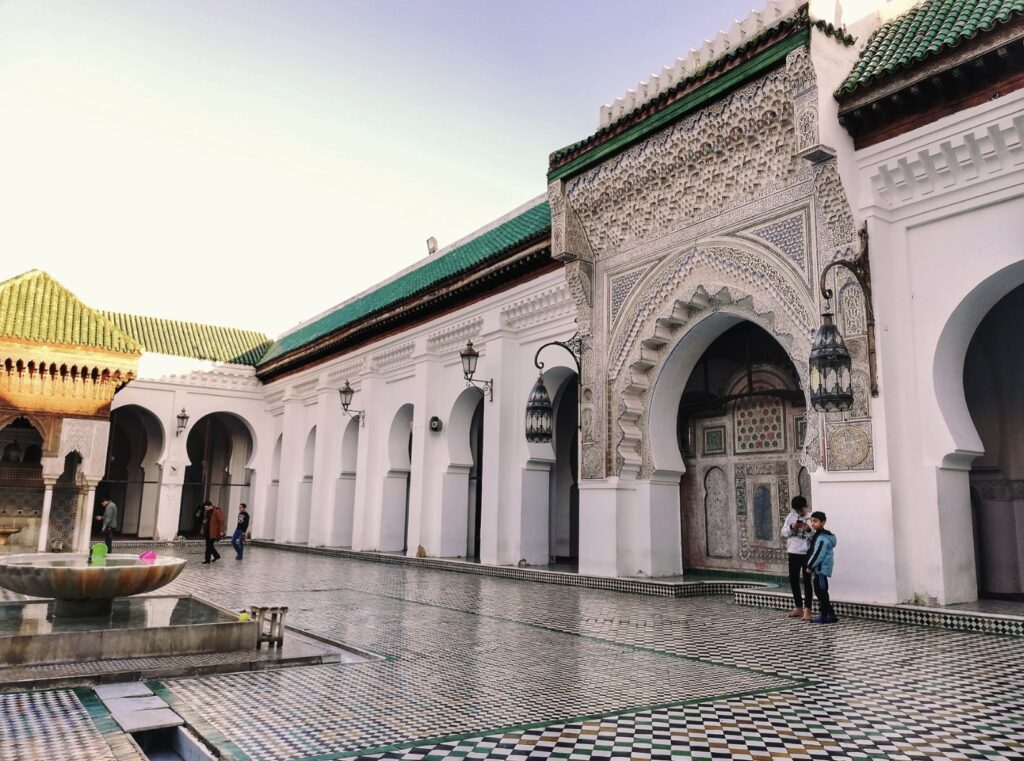
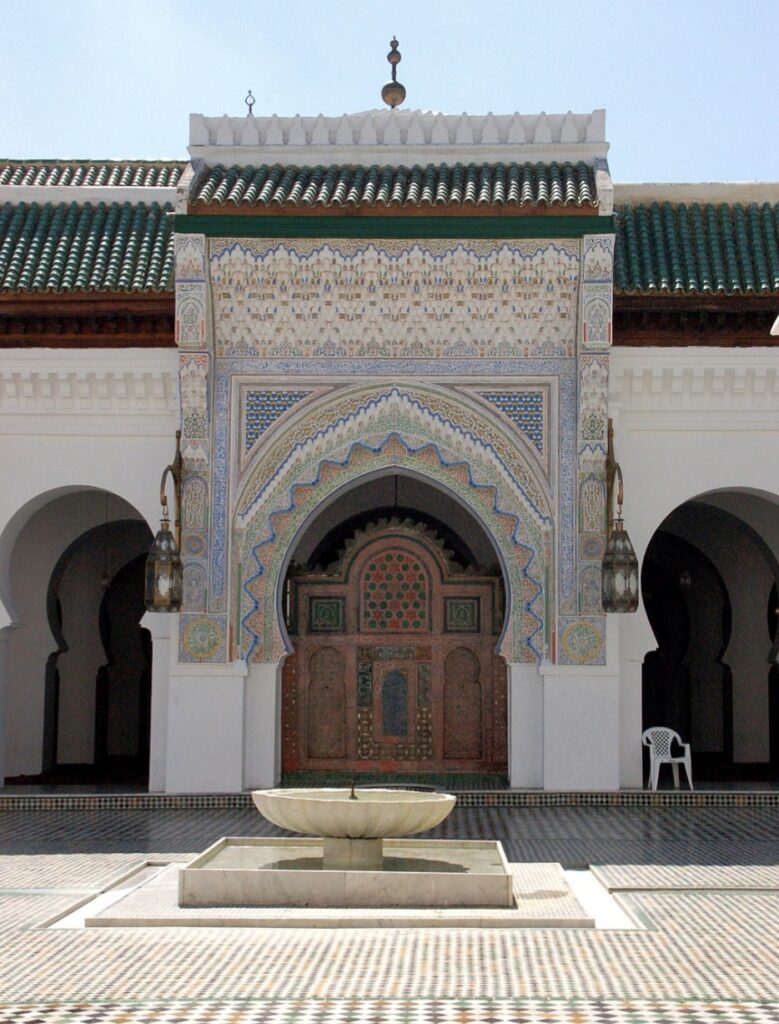
- Bou Inania Madrasa: A 14th-century religious school renowned for its exquisite architecture and intricate woodwork.

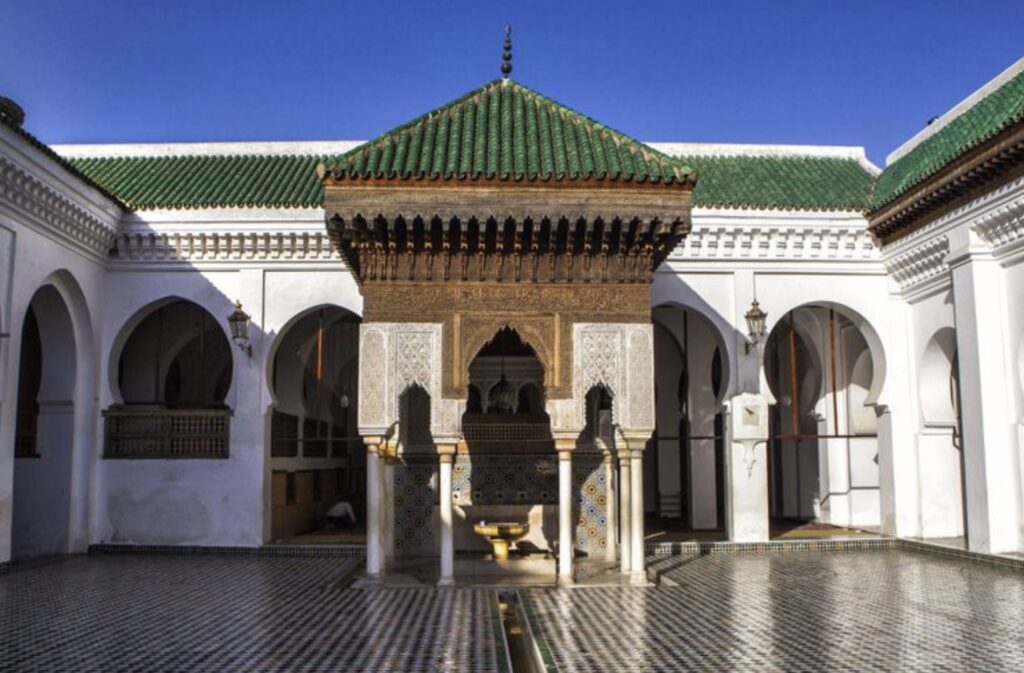
- Al-Attarine Madrasa: Built in the 14th century, famous for its elaborate decoration and beautiful courtyard.
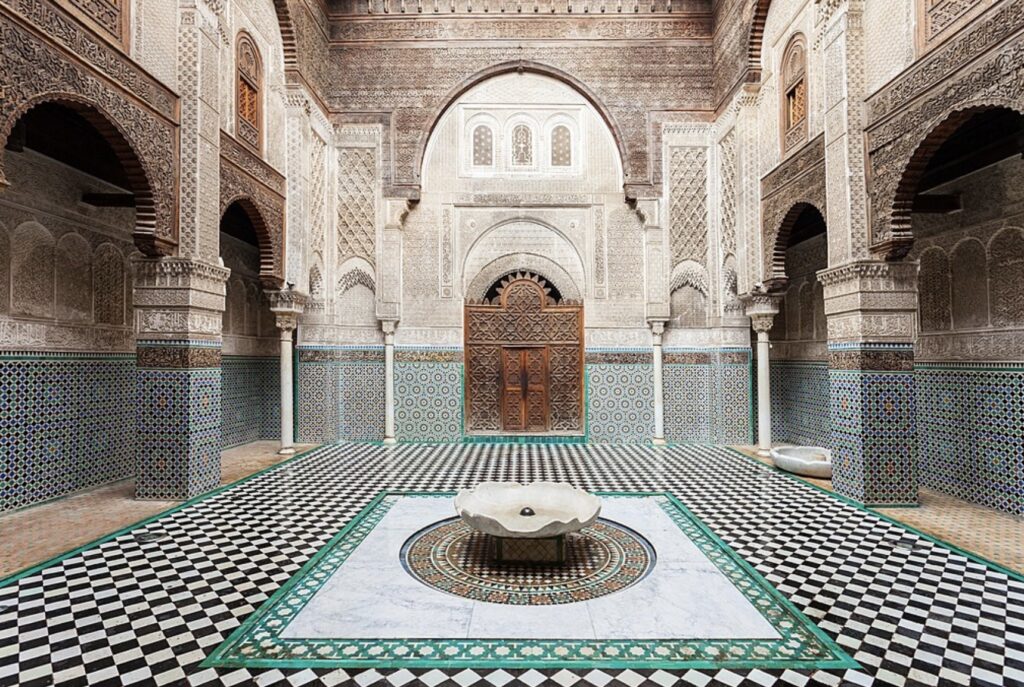
- Zaouia of Moulay Idriss II: A shrine dedicated to the founder of Fez, Moulay Idriss II, located in the heart of the medina.
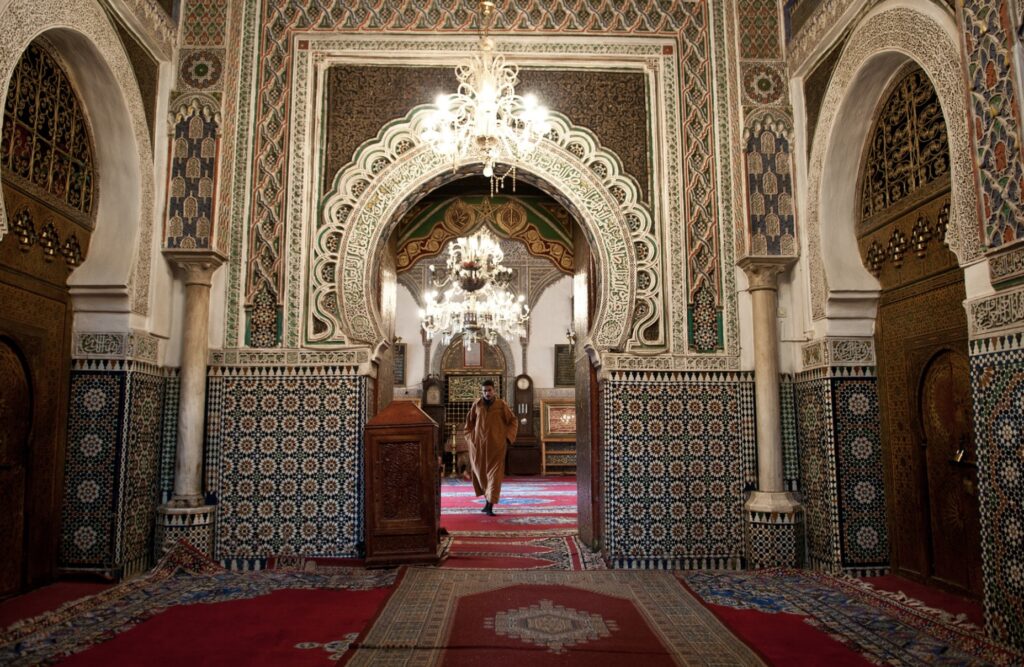
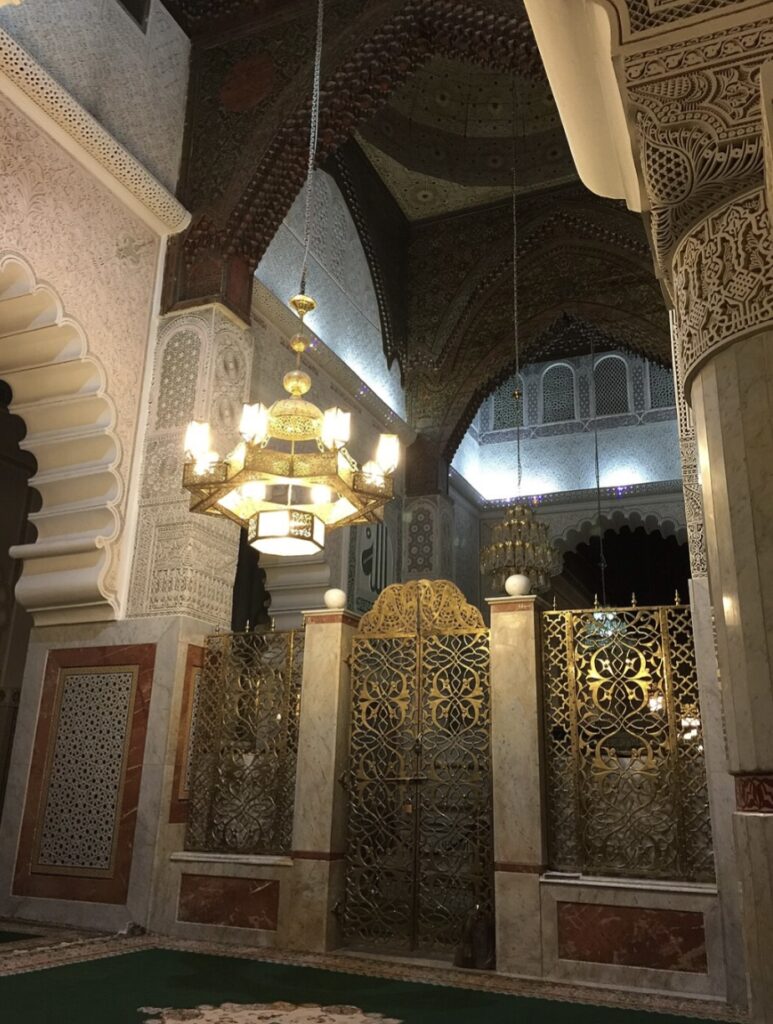
- Dar Batha Museum: A museum showcasing Moroccan arts and crafts, housed in a 19th-century palace.
- Fes el-Jdid (New Fez):
- Royal Palace (Dar al-Makhzen): Although not open to the public, its grand brass doors and surrounding gardens can be admired from the outside.
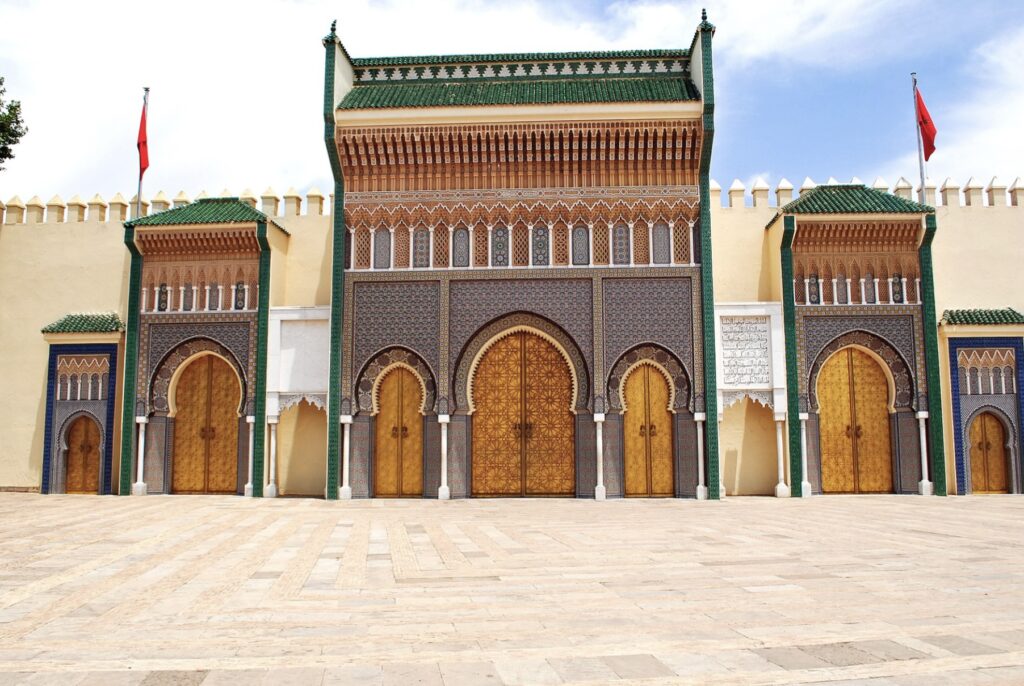
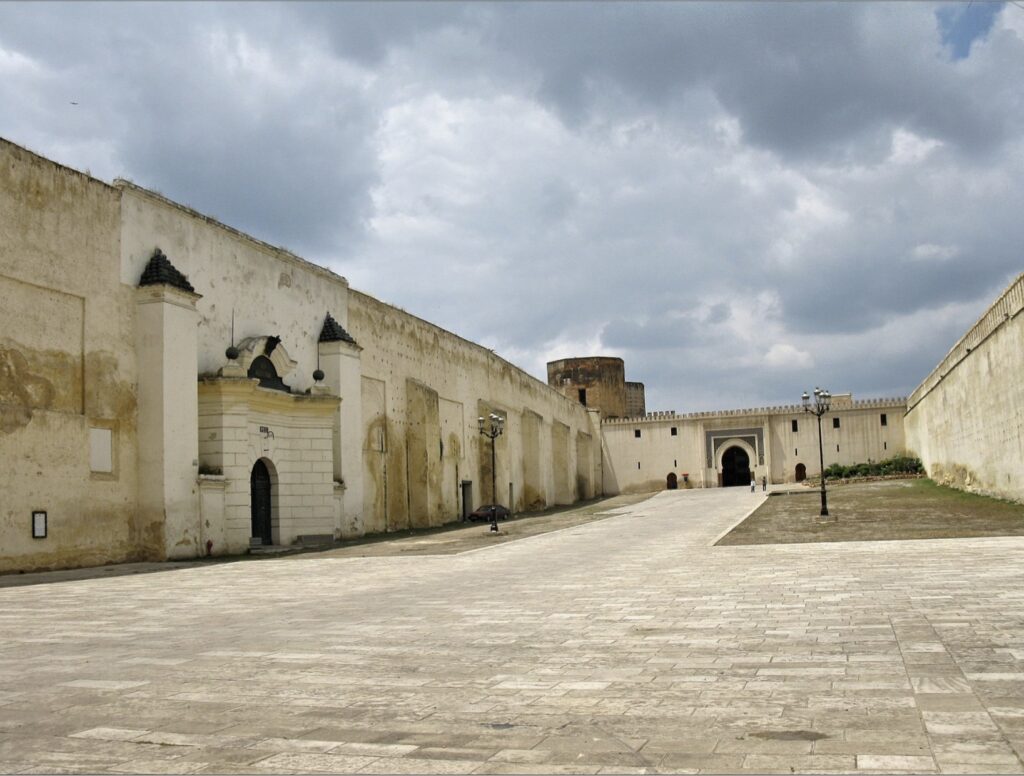
- Mellah (Jewish Quarter): An area with historical synagogues, including the Aben Danan Synagogue, and a Jewish cemetery.
- Tanneries:
- Chouara Tannery: The largest and most famous tannery in Fez, where visitors can observe traditional leather dyeing processes.
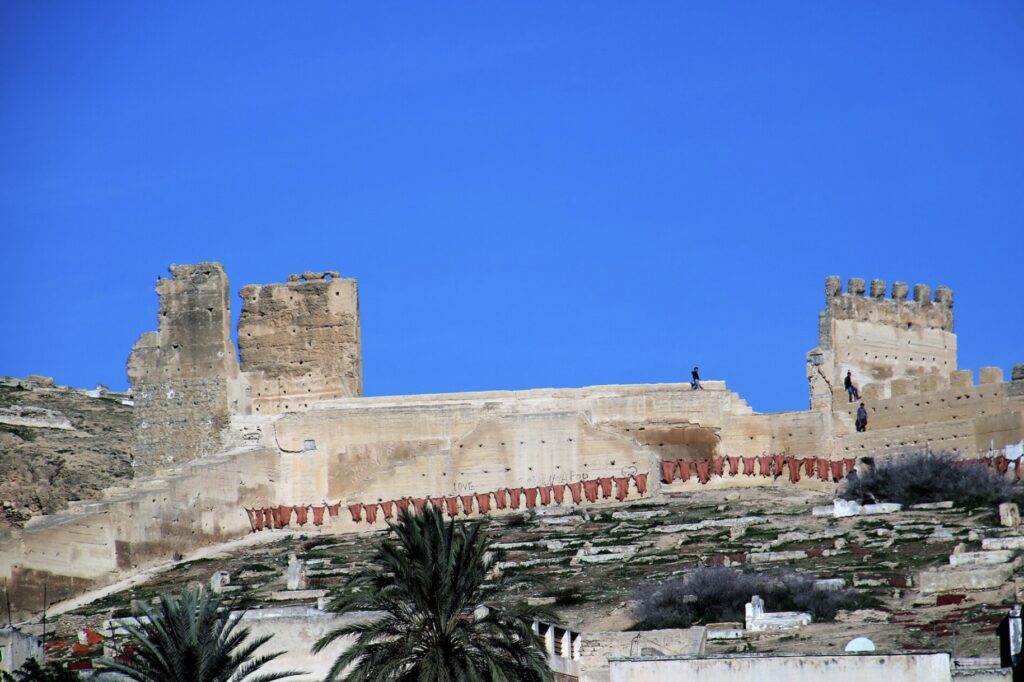
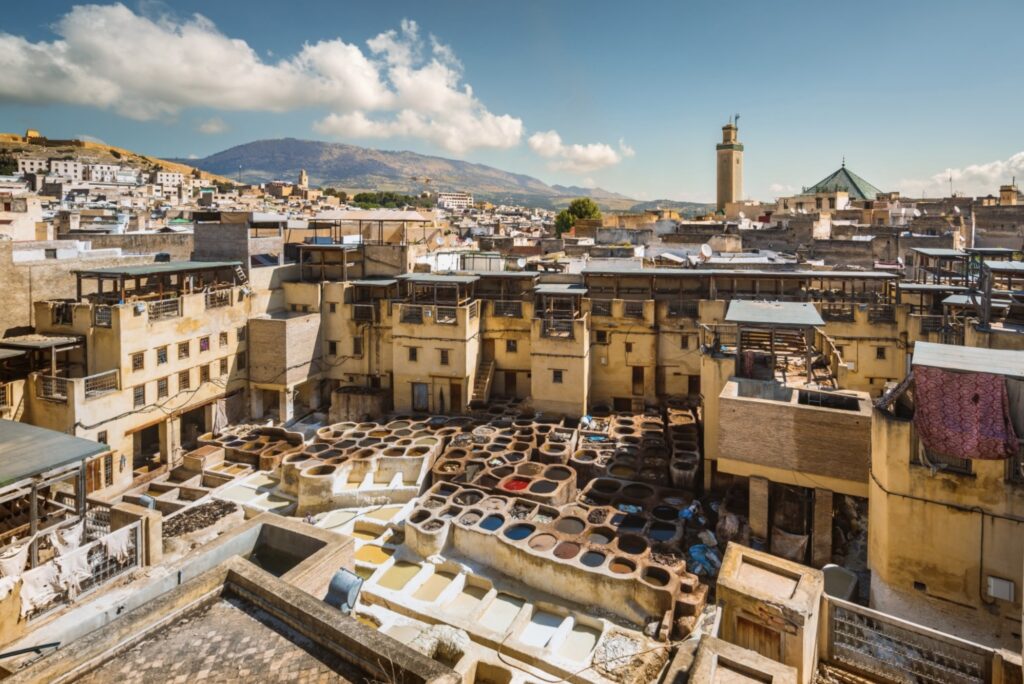
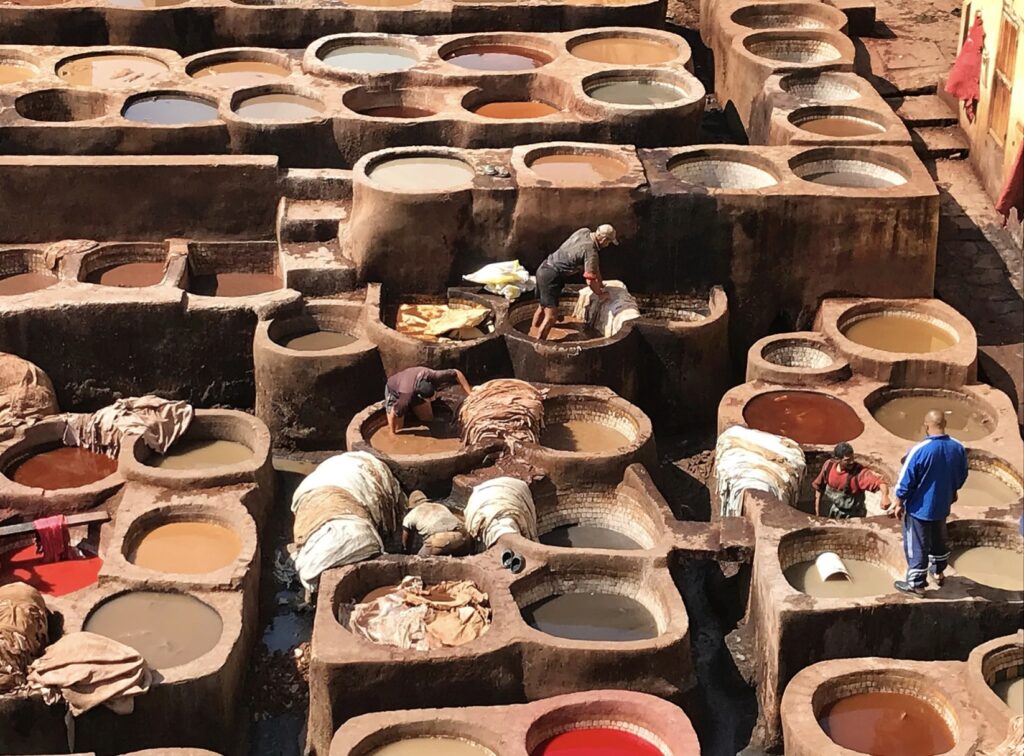
- Medieval Fortifications and Gates:
- Bab Bou Jeloud (Blue Gate): The main entrance to the old medina, known for its blue and green ceramic tiles.
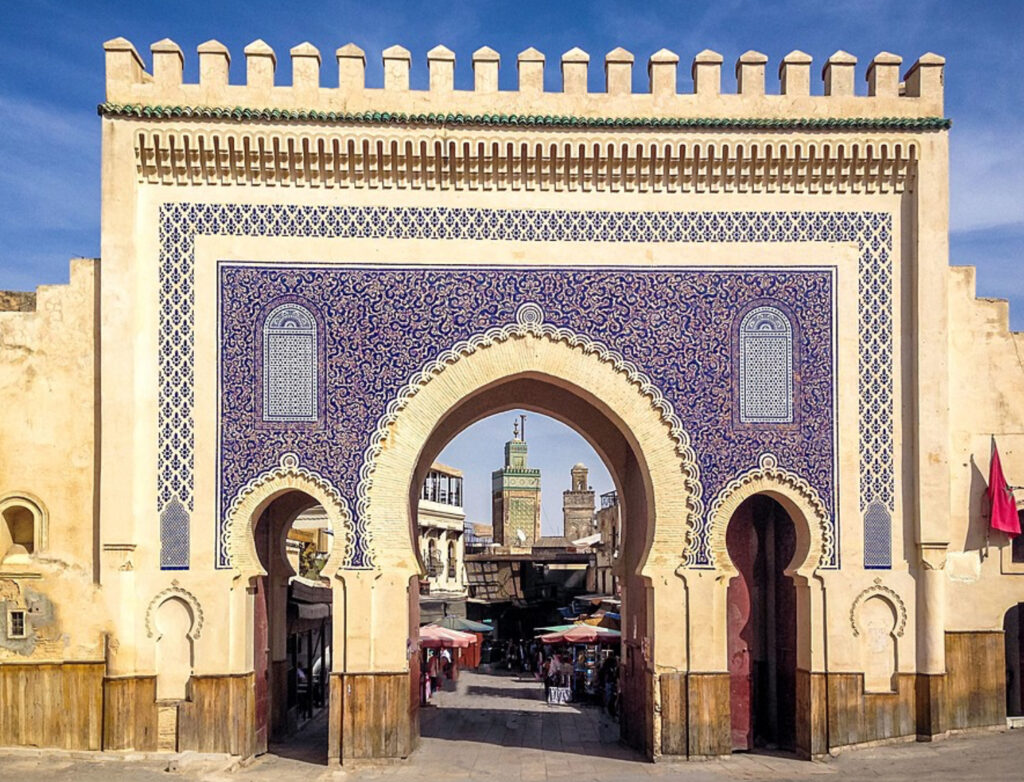
- Borj Nord: A 16th-century fortress offering panoramic views of the city and housing a museum of arms and armor.
- Madrasa Bou Inania: A masterpiece of Marinid architecture, known for its intricate stucco, tile work, and wood carvings.
- Museums:
- Dar Batha Museum: Exhibiting a collection of traditional Moroccan arts and crafts.
- Nejjarine Museum of Wooden Arts and Crafts: Located in a beautifully restored funduq (caravanserai), showcasing traditional woodworking tools and artifacts.
- Parks and Gardens:
- Jardin Jnan Sbil: A serene garden with fountains, walking paths, and a variety of plant species.
- Seffarine Square: A bustling square known for its metalworking workshops and traditional crafts.
- Fez Mellah: The old Jewish quarter with narrow streets, traditional houses, and historical synagogues.
- Andalusian Mosque: An ancient mosque located in the Andalusian part of the medina, reflecting the influence of Andalusian refugees who settled in Fez.
- Sahrij Madrasa: Known for its large water basin and stunning architecture, this madrasa was built in the 14th century.
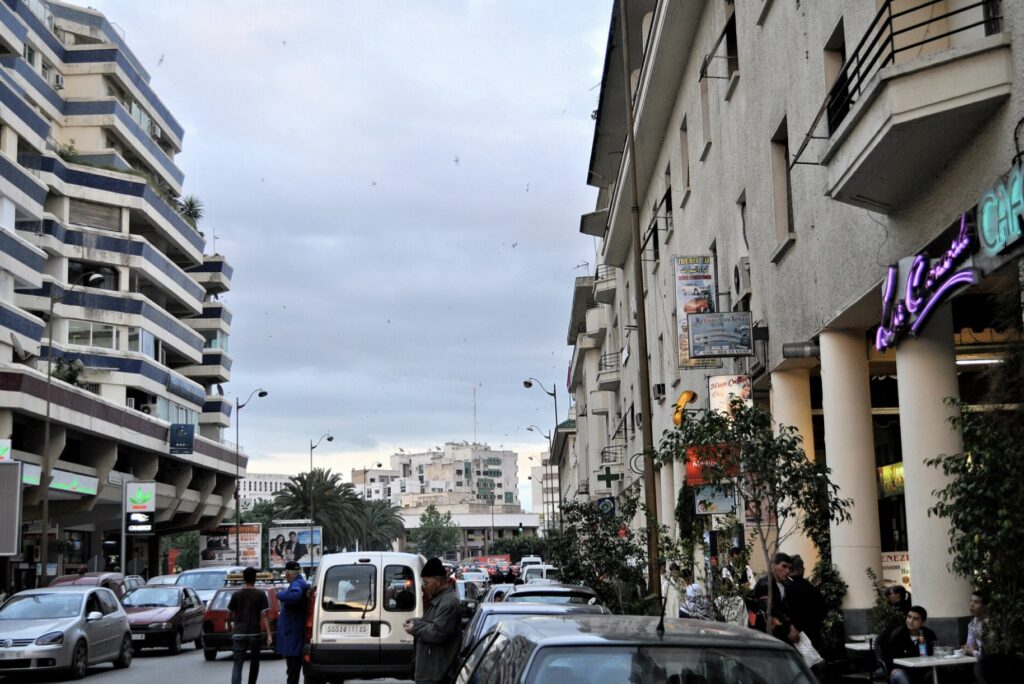
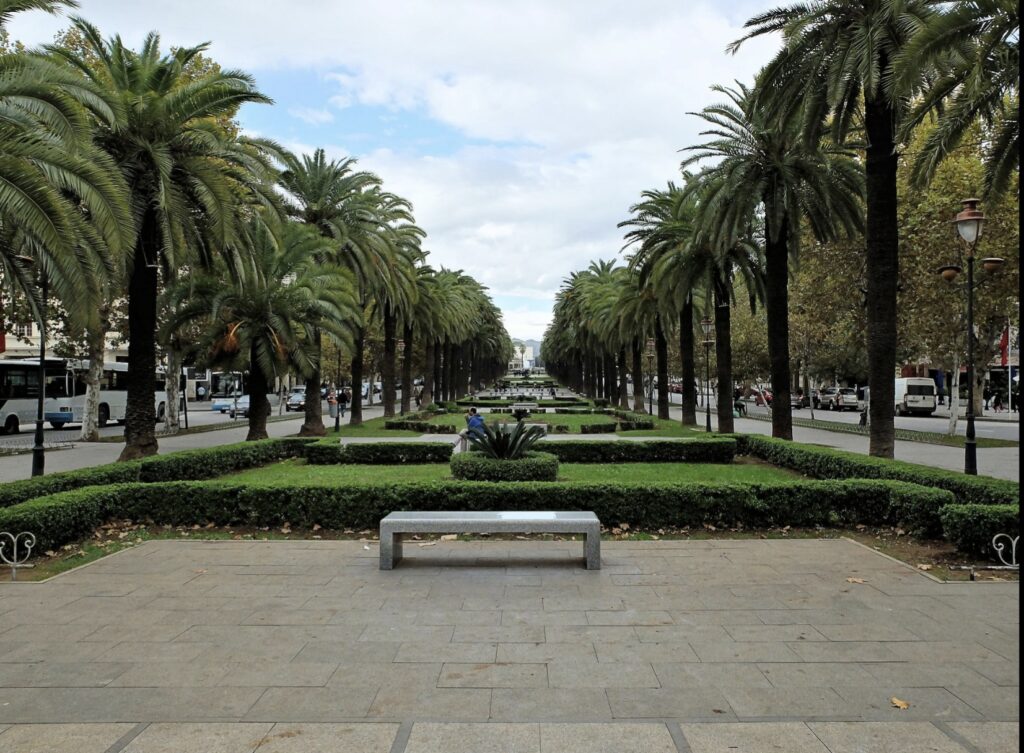
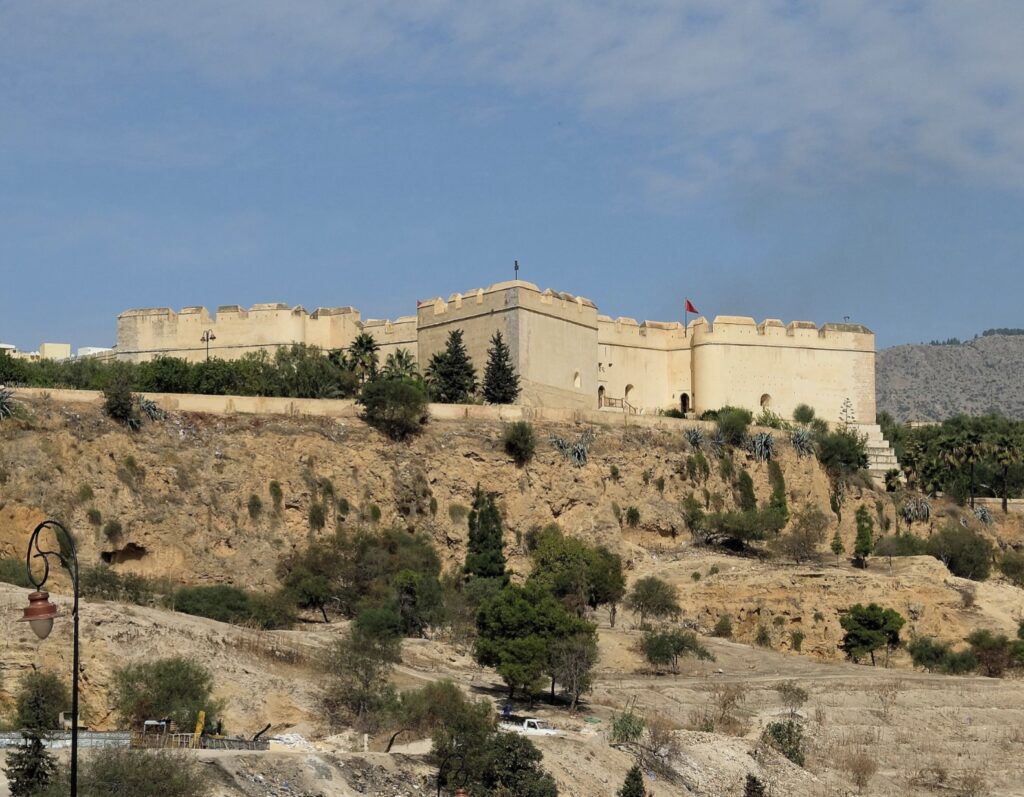
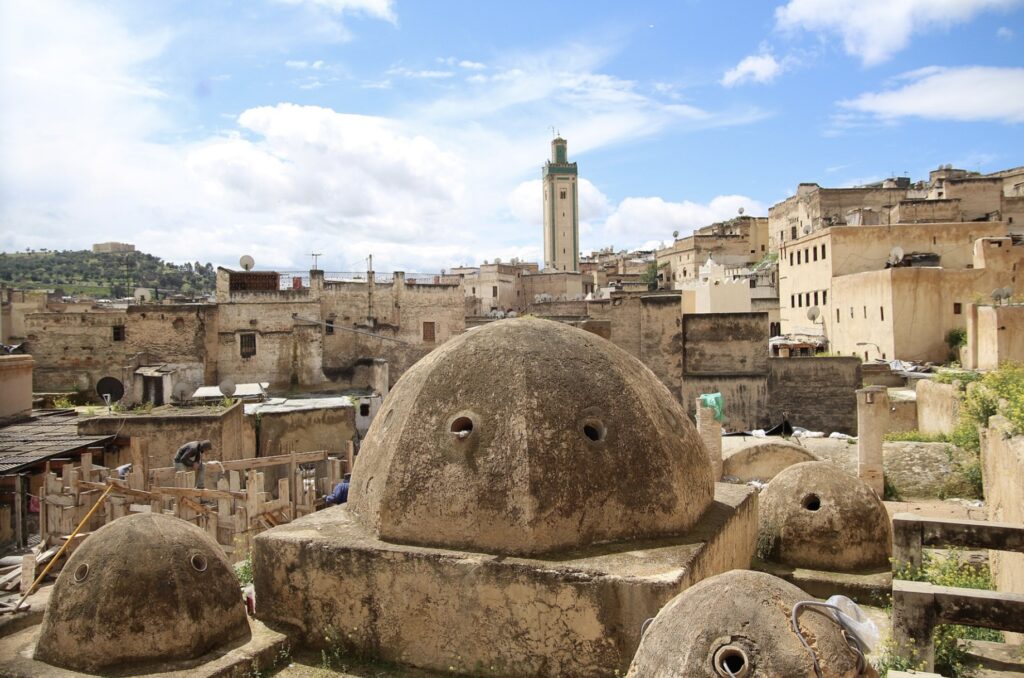
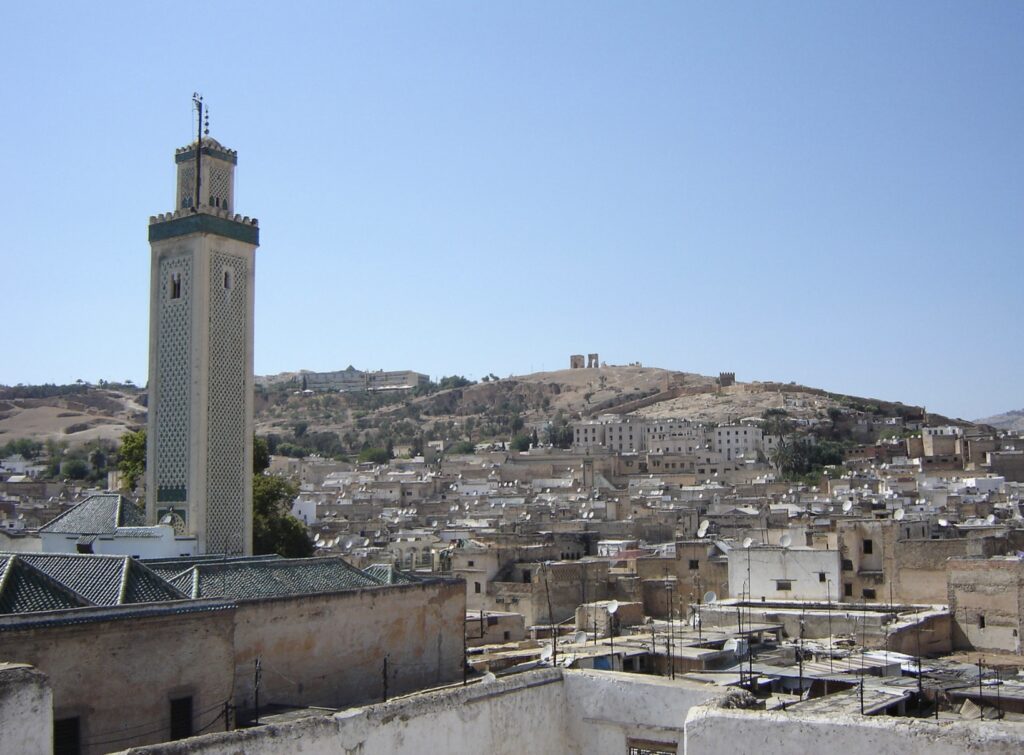
Fez is a city rich in history and culture, with numerous attractions that reflect its medieval heritage and vibrant artisan traditions.
Food Specialties of Fez
- B’stilla (Pastilla): A savory-sweet pie made with thin layers of pastry, usually filled with pigeon or chicken, almonds, and spices, then dusted with powdered sugar and cinnamon.
- Harira: A traditional Moroccan soup made with tomatoes, lentils, chickpeas, lamb or beef, and a mix of herbs and spices, often served during Ramadan to break the fast.
- Rfissa: A dish made with shredded msemen (a type of Moroccan flatbread), chicken, lentils, and fenugreek seeds, all cooked in a flavorful broth.
- Tajine: A slow-cooked stew named after the earthenware pot it’s cooked in, typically featuring meats like lamb, beef, or chicken, combined with vegetables, dried fruits, nuts, and aromatic spices.
- Mrouzia: A sweet and savory lamb tajine prepared with raisins, almonds, honey, and a special blend of spices called ras el hanout.
- Zaalouk: A cooked salad made from eggplant, tomatoes, garlic, olive oil, and spices, often served as a dip with bread.
- Kefta: Spiced ground meat, usually beef or lamb, shaped into balls or patties and often grilled or cooked in a tomato-based sauce.
- Makouda: Moroccan potato fritters that are crispy on the outside and soft on the inside, often served with harissa sauce.
- Seffa: A dish of steamed vermicelli or couscous topped with powdered sugar, cinnamon, and almonds, often served with a savory meat sauce.
- Khlii: Moroccan preserved meat, usually beef or lamb, marinated with spices and dried in the sun, then stored in fat. It’s often used to flavor dishes like scrambled eggs.
- Chebakia: A traditional Moroccan cookie made from dough shaped into flower-like forms, fried, and then coated with honey and sesame seeds, typically enjoyed during Ramadan.
- Briouats: Small, triangular or cylindrical pastries filled with savory mixtures such as meat, cheese, or vegetables, and then fried or baked.
- M’semen: A layered flatbread, often enjoyed with honey and butter for breakfast or as a snack.
Fez’s cuisine reflects its rich history and cultural influences, with a focus on aromatic spices, sweet and savory combinations, and hearty, flavorful dishes.
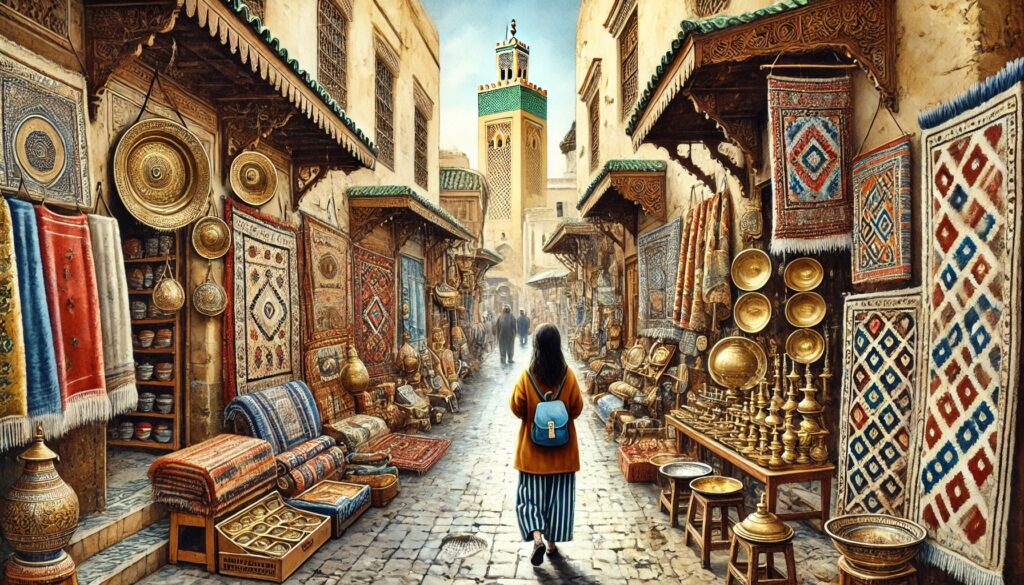
Two-Day Itinerary for Visiting Fez
Day 1: Exploring the Medina and Historical Sites
Morning:
- Start at Bab Bou Jeloud (Blue Gate): The main entrance to Fes el-Bali (Old Medina). Admire the intricate tile work and get your bearings.
- Breakfast at Café Clock: Enjoy traditional Moroccan breakfast dishes like msemen (layered flatbread) with honey and a glass of fresh mint tea.
Mid-Morning:
- Visit Bou Inania Madrasa: A stunning example of Marinid architecture with intricate stucco and wood carvings.
- Explore the Al Quaraouiyine Mosque and University: The oldest continuously operating university in the world. Note that non-Muslims are not allowed inside, but the exterior and surrounding area are worth exploring.
- Walk to the Attarine Madrasa: Another beautiful madrasa known for its detailed decoration.
Lunch:
- Lunch at Thami’s Restaurant: Located near the Blue Gate, this spot offers traditional Moroccan dishes like tajine and couscous in a casual setting.
Afternoon:
- Visit the Nejjarine Museum of Wooden Arts and Crafts: Located in a beautifully restored funduq (caravanserai), showcasing traditional woodworking tools and artifacts.
- Explore the Tanneries: Head to the Chouara Tannery to see the traditional leather dyeing process. Visit one of the nearby terraces for the best view.
Late Afternoon:
- Visit the Mellah (Jewish Quarter): Explore the narrow streets, historical synagogues, and the Jewish cemetery.
Evening:
- Dinner at Restaurant Dar Roumana: An upscale restaurant located in a beautifully restored riad, offering a mix of Moroccan and French cuisine.
Accommodation:
- Stay at Riad Fès – Relais & Châteaux: A luxurious riad offering a blend of traditional Moroccan architecture and modern amenities. Enjoy the beautiful courtyards, rooftop terrace with panoramic views, and an exquisite dining experience.
Day 2: Cultural Immersion and Culinary Delights
Morning:
- Breakfast at Riad Fès: Enjoy a traditional Moroccan breakfast in the serene courtyard or rooftop terrace.
- Visit Dar Batha Museum: A museum showcasing Moroccan arts and crafts, housed in a 19th-century palace.
Mid-Morning:
- Stroll through Jardin Jnan Sbil: A peaceful garden with fountains, walking paths, and a variety of plant species.
- Visit Borj Nord: A 16th-century fortress offering panoramic views of the city and housing a museum of arms and armor.
Lunch:
- Lunch at Café Fez: Located near the medina, offering a mix of Moroccan and international dishes. Try the kefta (spiced meatballs) or zaalouk (eggplant salad).
Afternoon:
- Explore Seffarine Square: Known for its metalworking workshops and traditional crafts. Watch artisans at work and browse the shops.
- Visit the Andalous Mosque: Located in the Andalusian part of the medina, reflecting the influence of Andalusian refugees who settled in Fez.
Late Afternoon:
- Visit a Traditional Hammam: Experience a Moroccan hammam for a relaxing and cultural experience. Riad Fès offers a luxurious private hammam service.
Evening:
- Dinner at The Ruined Garden: A restaurant offering a beautiful garden setting and a menu that includes Moroccan specialties like pastilla (a savory-sweet pie) and rfissa (chicken with flatbread and lentils).
Night:
- Night Walk in the Medina: After dinner, take a leisurely walk through the illuminated streets of the medina. The ambiance in the evening is magical, and you’ll get a different perspective of the city’s vibrant life.
This itinerary provides a balanced mix of cultural exploration, historical sites, and culinary experiences, along with a luxurious stay at one of Fez’s finest traditional accommodations.
